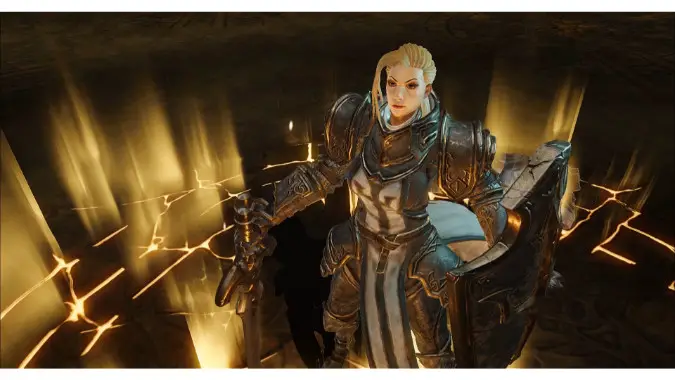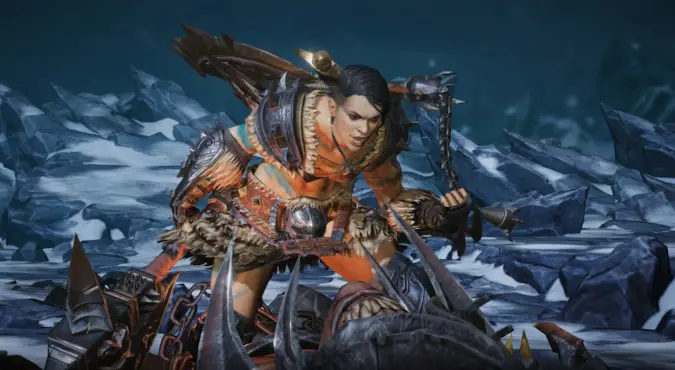Death is not the end: what to do when you die in Diablo Immortal

For a game with the word “immortal” in the title, you can die pretty easily in Diablo Immortal. Fortunately DI has chosen to emulate Diablo 3 rather than its predecessors for its death mechanic, so getting up to fight again is just as easy as dying. That said, different game modes have different rules, so knowing the impact of a death will help you judge how to best handle the current situation and whether you can risk pulling just a few mobs more.
The biggest change is that there is no repair mechanic at all in DI, so there is no direct penalty for dying outside the inability to continue playing until you’re alive again. Your main source for rebirth is the Resurrection Stone, which you acquire very early in the opening quest chain. The Stone starts with one charge and builds up (or replenishes after use) by virtue of slaying monsters, up to a maximum of three charges.
If you have any charges on your Stone when you die in the open world, you will be given the option to use a charge or return to your last unlocked hub. Unless you’re out of charges or find yourself in way over your head and surrounded by a plethora of challenging mobs, the Stone makes the most sense to use. After the cast time and a short window of invulnerability you’ll be back to your demon-slaying self, none the worse for wear. However, if you die multiple times in quick succession the time to revive is increased, so if you’re struggling you may be better off choosing the town option rather than burning through your charges.
The fact that DI is an MMO, however, adds a new wrinkle: other players can resurrect you in the open world. If you accept their help, you get restored to life in the same location and without having to use a charge of your Resurrection Stone. This mechanic extends to other modes as well, but each mode has different limitations.

Battlegrounds, Rifts and the Helliquary
When you venture into the PVP zones, raid the Helliquary, or push Rifts (either Elder or Challenge) you’re going to die and your Resurrection Stone will not be available to you. Knowing what can be done in each case will help your progression in that mode.
PVP battlegrounds are the most straightforward: when you die you’re sent back to the spawn spot and have to wait a short interval before reviving. The game adds a portal that takes you back to the thick of the fight, so you don’t need to traverse the entire map to get back to combat. While dying doesn’t put you out of commission for too long, the revive interval increases which each death, so you don’t want to die too often otherwise you’ll find yourself spending too much time unable to fight. PVP has a bandage mechanic with a short cooldown — although it requires you to be out of combat to use — so you’ll want to disengage from fighting and heal up instead of risking death too often.
Rifts take a page from the Diablo 3 playbook and let you revive where you are with a time penalty that increases for each death, or you can opt to restart at a checkpoint which is the beginning of the floor you are on. Since dying in Rifts tend to happen when you overpull, unless your enemies are near death it’s probably a better idea to restart at the checkpoint rather than to wait and potentially die again. If you’re running the Rift with someone else, they should be able to resurrect you without a penalty although they should only do so if they’re out of combat.
Helliquary raids are eight-player content that have some of the most difficult encounters in the game. Every player has one self-revive they can use during an encounter; otherwise they must rely on someone else from the raid team doing a short cast to revive you — although they need to be wary that they themselves are not killed while in the casting process. Because the encounters are difficult it’s actually recommended to save your self-revive for the final phase of the fight rather than use it early; if you’ve pushed the boss to under 25% you’ll not want to waste time reviving others when it can be the difference between failure and success.
While no one enjoys dying, Diablo Immortal is the most forgiving in the franchise when it comes to what happens after death, so don’t let the prospect of it deter you from punching a little above your normal limits. There’s no “hardcore” mode either that ends your character with death, so keep pushing where you can to get the most out of the game.
Please consider supporting our Patreon!
Join the Discussion
Blizzard Watch is a safe space for all readers. By leaving comments on this site you agree to follow our commenting and community guidelines.
 @Kalcheus
@Kalcheus



